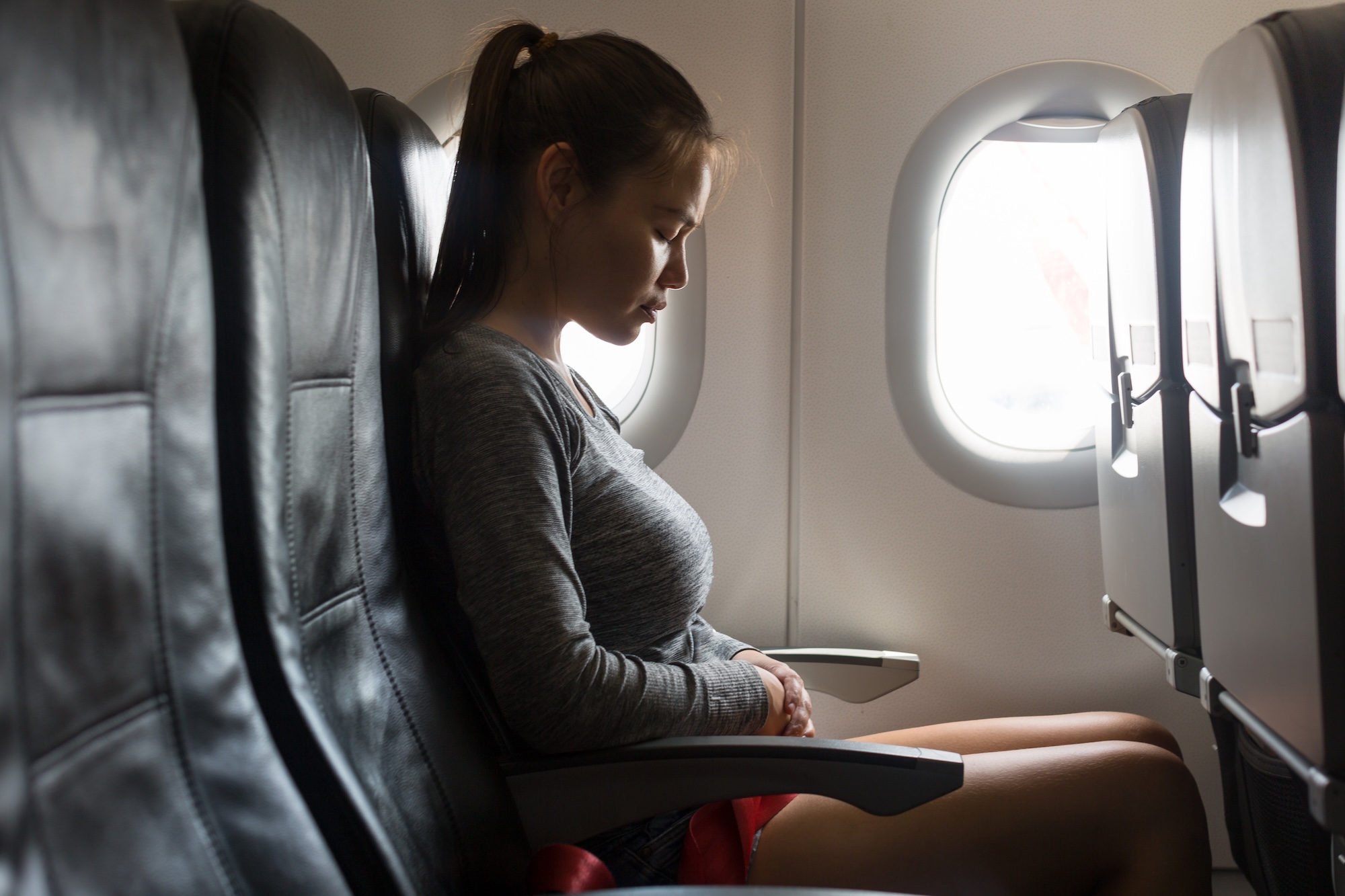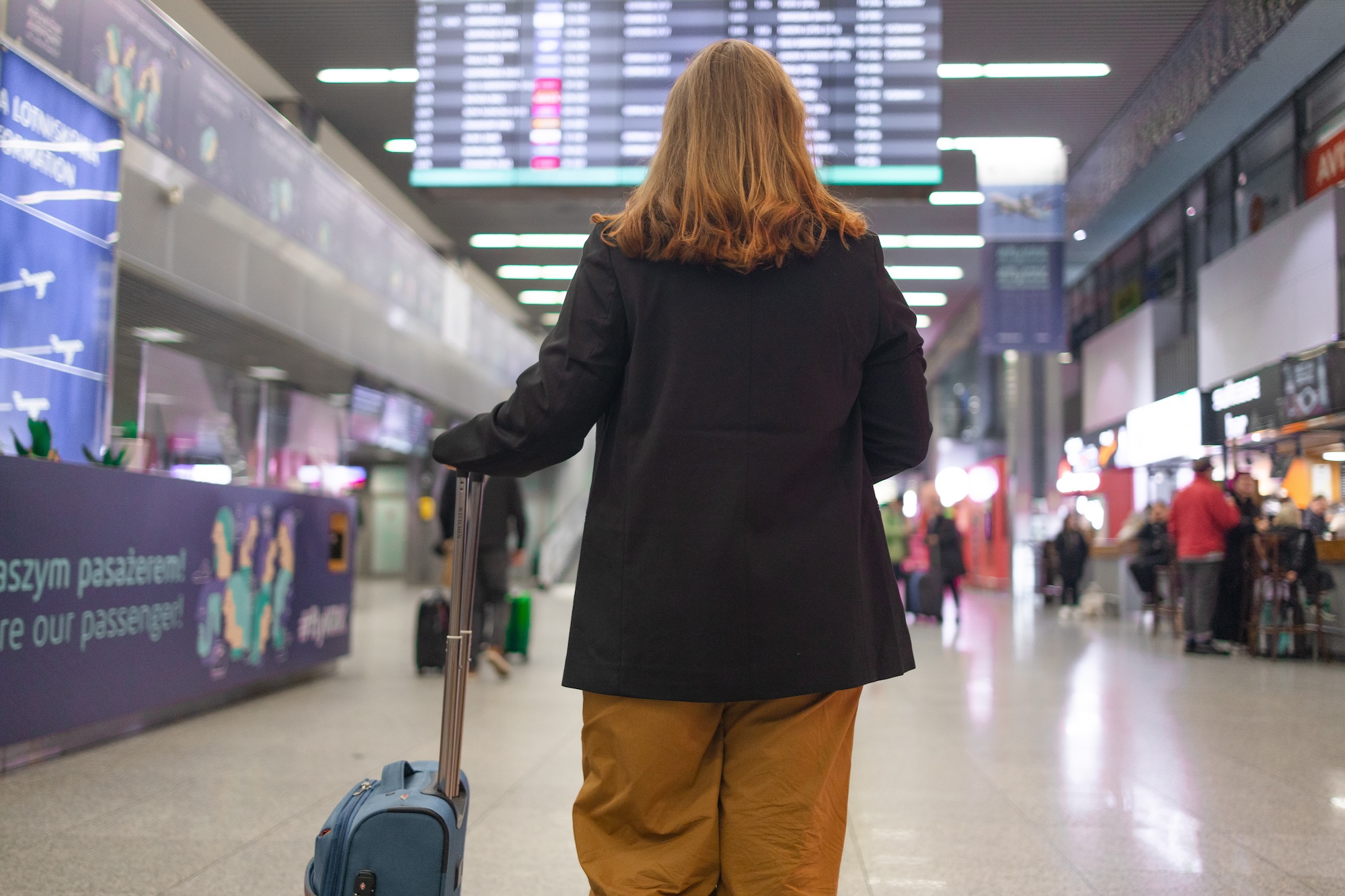Flying can be a thrilling experience for some, but for others, it can trigger anxiety and fear. If you’re a nervous flyer, you may dread the anticipation of takeoff, the idea of turbulence, or the sense of being confined in a small space. The good news is that there are effective ways to manage these nerves and make your flight more comfortable. This guide offers practical advice on how to handle flying, from preparing for your trip to managing your anxiety during the flight.
1. Preparing for the Flight: Set Yourself Up for Success
Learn About Flying One of the biggest fears of nervous flyers is the unknown. By understanding the facts about flying, you can reduce fear. Air travel is incredibly safe, with modern technology and experienced pilots ensuring that flights are as secure as possible. Read up on how planes work and why turbulence isn’t dangerous—it’s simply the plane moving through changing air currents, similar to bumps in a car ride.
Choose the Right Seat Where you sit on the plane can impact your comfort level. If you’re prone to motion sickness, try to sit near the wings, where the plane experiences the least amount of movement. If you feel claustrophobic or nervous, request an aisle seat, which offers a little more space and easy access to the bathroom. You might also feel more at ease sitting closer to the front of the plane, where turbulence is generally less intense.
Check-in Early & Plan Ahead If you can, check in for your flight online and choose your seat ahead of time. This minimizes any stress when you arrive at the airport and ensures you get a seat that makes you feel most comfortable. Arriving early will also give you extra time to settle in and get through security without feeling rushed.
Pack Comfort Items Prepare for comfort by packing items that make you feel more at ease. Whether it’s a neck pillow, a cozy blanket, or your favorite snack, having familiar items with you can create a sense of security and calm.
2. During the Flight: Staying Comfortable and Calm
Dress Comfortably Wear layers so you can adjust your clothing to the temperature in the cabin. Airplanes can get cold, but you’ll also want to make sure you’re comfortable. Avoid tight clothes or shoes that restrict circulation.
Hydrate and Eat Wisely Dehydration can exacerbate feelings of anxiety, so drink plenty of water before and during your flight. Avoid excessive caffeine and alcohol, as these can make anxiety worse. Bring snacks that you enjoy, as eating can help distract you from your nerves.
Use Noise-Canceling Headphones or Earplugs The sounds of the engine, chatter, and general noise of the airplane can be unsettling. Noise-canceling headphones or simple earplugs can help block out these distractions and create a sense of calm. You can listen to calming music, an audiobook, or even a soothing podcast to help you relax.
Stay Occupied Keep your mind busy with entertainment. Bring along books, movies, puzzles, or games that you enjoy. Staying distracted from the flight itself can help the time pass more quickly and ease your nerves.
3. Managing Anxiety: Techniques for Staying Calm
Focus on Breathing One of the simplest and most effective ways to manage anxiety during a flight is to practice deep breathing. Breathe in slowly for a count of four, hold for four seconds, then exhale for a count of four. Repeat this process, focusing only on your breath to help calm your nervous system. Even a few minutes of deep breathing can make a big difference.
Progressive Muscle Relaxation (PMR) Progressive Muscle Relaxation involves systematically tensing and then relaxing different muscle groups in your body. Start from your toes and work your way up to your head. This helps release physical tension and can guide your focus away from your anxiety.
Positive Visualization Take a few moments to close your eyes and picture yourself having a smooth and pleasant flight. Imagine yourself landing safely and feeling relaxed. This mental exercise can shift your focus from fear to calm anticipation.
Mindfulness and Grounding When anxiety starts to rise, grounding techniques can help you refocus. Try to pay attention to the physical sensations around you, like the feel of your feet on the floor or your hands resting on your lap. This mindfulness practice can help ground you in the present moment and prevent your mind from spiraling into worst-case scenarios.

4. In Case of Turbulence: What You Should Know
Understand Turbulence Many nervous flyers are particularly afraid of turbulence, but it’s important to know that turbulence is perfectly normal. Pilots and aircraft are trained to handle it. Think of turbulence like driving over bumps in the road—it might feel a little unsettling, but it’s not dangerous. Keep your seatbelt fastened when the seatbelt sign is on, and try to focus on staying relaxed during those brief moments of shaking.
Distraction Is Key If turbulence makes you anxious, use the techniques we’ve already discussed—deep breathing, listening to music, or focusing on something else. The more you can distract yourself from the sensations of turbulence, the less it will affect you.
5. Getting Through Security & The Airport: Minimizing Pre-Flight Anxiety
Arrive Early Arriving at the airport with plenty of time gives you room to breathe and ensures you won’t feel rushed. Aim for at least two hours before a domestic flight or three hours for international flights. This gives you time to clear security, grab a snack, and mentally prepare.
Use a Calm-Down Routine Create a pre-flight routine that helps you unwind. This could be something like sitting in a quiet spot, reading, or listening to a calming playlist before you board. Doing something familiar and comforting can set the tone for the rest of your trip.
Focus on the Bigger Picture Remind yourself that flying is a means to an end. Your goal is to reach an exciting destination, whether it’s a vacation, visiting loved ones, or a new adventure. Focusing on the positive aspects of your travel can help keep your anxiety in check.
6. Speak Up if You Need Support
Let the Flight Crew Know Flight attendants are trained to assist passengers with a variety of needs, including nervous flyers. Don’t hesitate to let them know you’re anxious—they can offer reassurance, check on you during the flight, and help distract you if needed. They may even suggest breathing techniques or offer a warm towel to help soothe you.
Consider Professional Help If you find that your fear of flying is affecting your ability to travel, seeking help from a therapist who specializes in anxiety or fear of flying can be a great next step. Many therapists teach techniques like Cognitive Behavioral Therapy (CBT), which can help you manage and reduce anxiety over time.
7. Celebrate Your Success
Acknowledge Your Achievement Each time you fly, take a moment to recognize your bravery. Flying is no small feat, especially for nervous travelers. Celebrate your ability to handle the experience—whether it’s by planning something enjoyable for when you land or simply giving yourself credit for making it through the flight.

8. Preparing for and Dealing with Motion Sickness
Motion sickness is a common issue for nervous flyers, and it can make the experience even more uncomfortable. Whether it’s the subtle swaying of the plane or the more noticeable turbulence, the sensation of being in motion can trigger nausea, dizziness, or discomfort. Fortunately, there are plenty of ways to prepare for and deal with motion sickness, so you can focus on enjoying your flight rather than fighting your stomach.
Preparing for Motion Sickness: What You Can Do Before the Flight
1. Choose the Right Seat Where you sit on the plane plays a big role in how your body reacts to movement. To minimize the sensation of motion, try to select a seat over the wings, as this is the most stable part of the plane. The closer you are to the wings, the less you’ll feel the bumps and jolts that can trigger motion sickness. Avoid sitting near the back of the plane, where the movement tends to be more pronounced.
2. Take Motion Sickness Medication If you’re prone to motion sickness, taking an over-the-counter medication like Dramamine or Bonine before your flight can help. These medications typically need to be taken about 30 minutes to an hour before your flight, so plan ahead. Keep in mind that some of these medications can cause drowsiness, so consider how that might affect you during the flight. Always check with your doctor before taking any medication, especially if you’re unsure about side effects or interactions with other medications.
3. Natural Remedies For those who prefer a natural approach, several remedies can help prevent motion sickness:
- Ginger: Ginger is widely known for its anti-nausea properties. You can take ginger in the form of ginger candies, ginger tea, or even ginger capsules before your flight.
- Acupressure Bands: Some people find relief by wearing wristbands designed to apply pressure to a specific point on the wrist (known as the P6 acupressure point), which is thought to reduce nausea. These bands are available at most drugstores.
- Peppermint: Peppermint has soothing properties that can help calm the stomach. Drinking peppermint tea or sucking on peppermint candies before or during your flight can help prevent motion sickness.
Dealing with Motion Sickness During the Flight
1. Focus on a Stable Horizon If you begin to feel queasy, try to focus on something stable outside the plane, like the horizon. This can help your brain recalibrate and align your sense of balance. If you’re in a window seat, look outside and focus on a fixed point, such as a mountain or the horizon line. If you’re seated near the aisle, you can try closing your eyes and imagining a stable environment, like sitting on a beach.
2. Stay Cool and Hydrated Feeling overheated or dehydrated can exacerbate motion sickness. Keep cool by opening the air vent above your seat, and sip on water regularly to stay hydrated. Avoid sugary or caffeinated drinks, as they can make dehydration worse. If you’re feeling particularly unwell, a cold compress or a damp washcloth on your forehead may help calm your nausea.
3. Avoid Strong Smells and Heavy Meals Strong odors, such as food smells or perfumes, can worsen motion sickness. Try to avoid foods that are too rich or greasy before and during the flight. Opt for light snacks like crackers, nuts, or fruit, which are less likely to upset your stomach. Avoid alcohol and heavy meals right before or during the flight, as these can increase discomfort.
4. Take Short Breaks and Move Around If you’re sitting for too long and starting to feel sick, standing up and taking a short walk up and down the aisle can help. Gentle movement can reduce nausea, as long as you don’t overexert yourself. If walking isn’t an option, try to shift your body position every now and then—sitting upright, leaning slightly back, or even changing the way you’re holding your head can make a difference.
5. Use Breathing Techniques Deep breathing exercises can help calm both anxiety and motion sickness. Try the 4-7-8 technique: inhale for 4 seconds, hold your breath for 7 seconds, and exhale slowly for 8 seconds. This can help settle your stomach and soothe your nerves.
After the Flight: Recovering from Motion Sickness
Once you’ve landed, motion sickness symptoms may linger for a while, but there are things you can do to recover quickly:
- Rest: If possible, give yourself some time to rest. Lying down and closing your eyes for a bit can help your body adjust back to being still.
- Drink Water: Rehydrating is key. Nausea can often make you feel drained, so drink water or a rehydration solution (like electrolyte drinks) to help restore your balance.
- Eat Light: Stick to light, easily digestible foods like toast, crackers, or bananas to get your energy back without overwhelming your stomach.
Don’t Let Motion Sickness Stop You
While motion sickness can make flying uncomfortable, there are many ways to prevent or alleviate it. By choosing the right seat, using preventative measures before the flight, and implementing coping strategies during the flight, you can make your journey much more pleasant. Keep in mind that most people experience some level of motion sickness at some point, but with a little preparation and the right techniques, it doesn’t have to ruin your trip.
Final Thoughts: You’ve Got This!
Flying may never be entirely free of nerves, but by preparing, staying calm, and using practical strategies to manage anxiety, you can make the experience much more manageable. The more you fly, the more confidence you’ll build, and soon, flying will become just another part of your travel routine.
So, next time you’re about to board, take a deep breath, trust in your ability to stay calm, and focus on the excitement that awaits you. Safe travels! ✈️
Share This Guide
Whistler Blackcomb magic! ❄️⛷️ Epic powder, stunning views, and endless adventure await. Ready to hit the slopes? 👉 Check out our guide to "15 Must-Visit Ski Resorts in North America" at WorldTravelTips.org
1. Whistler Blackcomb, Canada
2. Aspen, Colorado, USA
3. Jackson Hole, Wyoming, USA
4. ...
Visit WorldTravelTips.org
📸 Photo by Peteleclerc
#SkiLife #WhistlerBlackcomb #WinterWonderland #SkiResorts #TravelInspiration #AdventureAwaits

🌍✨ London magic: from Trafalgar Square to Big Ben. 🇬🇧 Let’s make your London dream a reality! 🏙
Ready to plan your next adventure? Let us show you how to do London right. 🙂
📸 Photo by F11photo
#TravelGoals #ExploreLondon #TrafalgarSquare #BigBen #Wanderlust #TravelInspo #CityAdventures #ExploreWithUs #VisitLondon

🌴✈️ Island vibes incoming! 🌊☀️
Flying high and already dreaming of toes in the sand, crystal-clear waters, and endless sunshine. 😎💙 Who`s ready for a tropical adventure? 🙋♀️🙋♂️
📸 Photo by Jag_cz
#TravelGoals #IslandLife #WindowSeatViews #TropicalEscape #OnTheWay #SkyHigh #Wanderlust #AdventureAwaits

🌄✨ The views are better when shared with the best crew ✨🌄
📸 Photo by cppzone
#ViewsForDays #MountainVibes #HikingAdventures #NatureHeals #ChasingTheSummit #GetOutside

There`s a quiet kind of magic beneath the surface. Snorkeling isn`t just about seeing new places—it’s about connecting with a world that’s always been here, waiting for us to slow down and pay attention. 🌊🐠
📸 Photo by artifirsov
#OceanVibes #UnderwaterWorld #ExploreMore #NatureConnection









